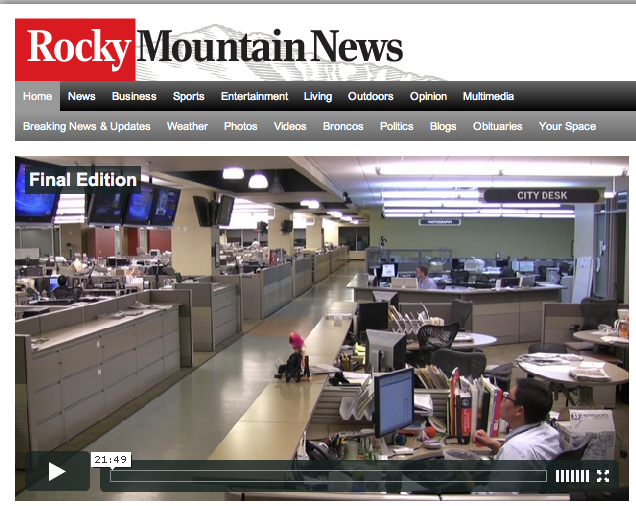Cablevision's New Online News Model May Be Optimum. Or Not.

This is a day you hope will be a turning point in the search for a sustainable business model online for the kind of journalism that requires sustained research, writing and editing. Original fact-finding and analysis based on that fact-finding.
The Rocky Mountain News in Denver today published its final edition, after nearly 150 years. That's the bad news.
Newsday, now owned by Cablevision, meanwhile said it would fly counter to conventional wisdom with its perch online and in the not-distant future start charging for its news, online. No more free stuff.
“We plan to end the distribution of free Web content and make our news gathering capabilities a service for our customers,” Cablevision's chief operating officer, Tom Rutledge.
Is this just going to be the latest unsuccessful effort to get readers (or viewers) to pay for news? If The New York Times -- the best of the daily newspapers -- can't its loyal, thoughtful and high-demographic audience to pay for it online, who can? Newsday is a good newspaper. But it's no New York Times.
The Times stuck its toe in the water, trying to getting people to subscribe (for a fee) to read its columnists and editorialists online. The Times Select service pulled in $10 million a year in subscription revenue. But got closed down, you were left to think, because foregone ad revenue from higher traffic would have been greater.
But Rutledge is not sticking a toe in the water. It's ending the distribution of Web content for free. Period. That's how I read and hear what Rutledge is saying.
That's a wholly different model. And one that comes down to what a company thinks its own product is worth. Newspapers didn't have to starve themselves online. In fact, one of the very first online "newspapers" -- StarText from the Fort Worth Star-Telegram -- charged $5 a month for its menu-driven news in the 300 baud days of computing. In 1982. Before the Mac was born and when Commodore was still a name to be reckoned with.
That service only managed to pick up 3,000 paying customers. But guess what? Its costs were low and it made a profit. More importantly, it established the principle that if you wanted news to come over a wire, it was going to cost you. Just like in print. Because the news you were getting was every bit as valuable, even if it came on screen.
Today was a typically frustrating day for me in getting my print edition of The New York Times. I live in Fairfield County, CT. Home turf. Its guarantee: delivery by 6:30 a.m., every weekday. But that has not been the case for the last four days. Today, it wasn't there when I left at 7 a.m. No problem. I was headed to Starbucks in Wilton. Its racks were empty -- at 8 a.m. I had to go to a third stop, a Stop & Shop to get one. All because I didn't bring my iPod Touch with me.
The Times is better online than it is in print. Believe me, I prefer reading it on a laptop and even on the Touch.
But the point is this: The Times is driving me to drop the print product. Why should I pay $40 a month for something that doesn't arrive, when I get everything on its pages and more, for free, on screen?
It's not like I don't value it. I just don't have to pay for it, on screen.
If you don't value your product, why should the customer? If you make it available for free, why should anyone pay for it? You set the expectation. And enforce it. Not half way. The whole way.
Now, it'll be interesting to see if Newsday can stick by its guns, online. Says here, The Times would have a much better shot of getting $20 a month online, than its friendly Long Island rival will.
So stay tuned. It'll be really interesting to see, in the meantime, what Rutledge comes up with in the way of a creative Cablevision news service online, with or without the Newsday brand.
On cable, it's already staked out pieces of what used to be core to the news business in print, with its Optimum Autos and Optimum Homes listing services online. It also has its News 12 local TV news networks ("free" -- if you subscribe to cable TV).
Now, we'll have to see what Rutledge makes of news, online. And whether its idea that you can charge for it will be Optimum. Or not.
